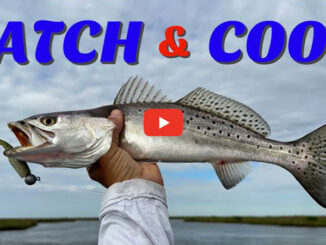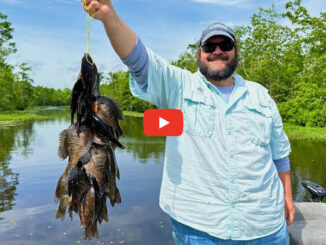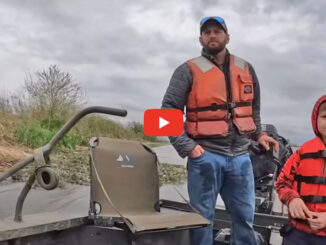It was a little tough getting a minnow out of Wesley Miller’s minnow bucket this past weekend. A layer of ice had formed on the water’s surface the night before because of the subfreezing temperature, but to hear Miller explain it, the white perch bite best in Bayou Dorcheat when it’s cold.
Bayou Dorcheat is the small, winding bayou that runs from Arkansas down through Minden and on into Lake Bistineau. Miller lives on the bayou between Sibley and Doyline, and he’s been on a hot white perch bite in about a two-mile stretch of the bayou from just above the Louisiana Highway 164 bridge to just below it.
From I-20 to Lake Bistineau, Bayou Dorcheat spreads out into countless barrow pits where construction crews dug dirt for the construction of the interstate, and that’s where a lot of fish, white perch included, like to go to spawn during the spring. But until then, the white perch suspend in the spreading limbs at the ends of trees that have fallen over the bluff banks in the bayou itself.
“They’ll stick around out here until the water warms up enough for them to move up shallow and spawn,” Miller explained while unhooking the first of several white perch. “The bayou’s been down most of the winter because of Lake Bistineau being drawn down so they can fight the salvinia down there. That’s kind of put the fish is some very predictable places because there isn’t much left in the water.”
Miller keeps it very simple when going after these white perch. He favors an opening-night-colored 2-inch Bobby Garland Baby Shad rigged on a 1/32-ounce jighead, and he fishes this set-up on 6-pound-test Berkley Vanish fluorocarbon line.
“The opening night just seems to match what our minnows look like,” Miller explained. “Get a minnow out of the bucket and hold it up to an opening night jig and you’ll see that they have a similar color.
“And I like the small fluorocarbon line because I think I get more bites with it because it’s harder for the fish to see. Fluorocarbon is also a lot more sensitive than mono.”
While Miller and I fished around three or four other boats, it was apparent that we were just about the only anglers catching fish. Miller recalled a story about how he tried to help a guy not too long ago by telling him that positioning his knot correctly on his jig would help him catch more fish.
“I told him to make sure his knot was at a 90-degree angle with his hook shank,” Miller said. “When your knot rides too far to the front of the hook eye, your bait winds up looking like a stick coming through the water. Pull your knot back so that it’s sticking straight up from your jighead and your bait will look more like a minnow in the water.”
The fellow caught two fish as soon as he made the change, but he obviously forgot to reposition his knot in all the excitement. He never caught another fish as long as Miller sat there with him, and Miller didn’t remind him.
Perhaps it was something more than the angle of our knots on this day, but we were the only boat that wasn’t complaining about the fishing. It wasn’t as fast as Miller had expected, but about 20 nice slabs on the filet table made for a more than enjoyable Sunday morning.


